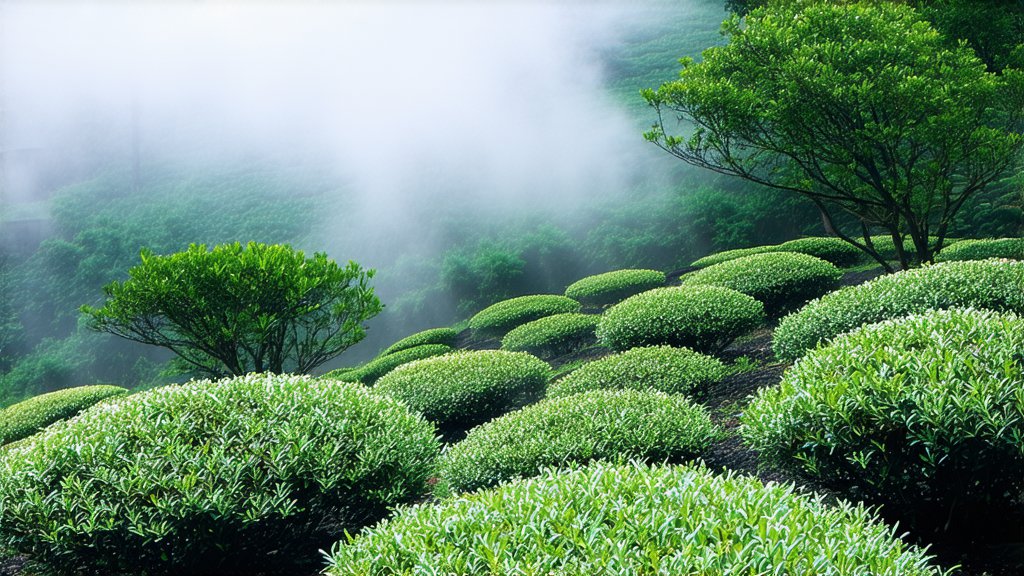
Bai Mudan, often referred to as "White Peony," is one of the most revered varieties within the realm of Chinese white tea. This exquisite tea has garnered admiration for its delicate flavor profile and elegant appearance. In this article, we will delve into the rich history, diverse varieties, intricate production process, and sophisticated methods of appreciating Bai Mudan.
History of Bai Mudan
Bai Mudan's origins can be traced back to the early Qing Dynasty (1644-1912) in Fujian Province, China. It was during this period that the tea masters discovered the unique qualities of this tea. The name "Bai Mudan" translates to "White Peony," which is derived from the tea's resemblance to the white peony flower when the leaves are fully unfurled. Initially, Bai Mudan was considered a rare delicacy reserved for the imperial court and high-ranking officials. However, over time, it gained popularity among tea enthusiasts worldwide due to its exceptional quality and distinctive taste.
Varieties of Bai Mudan
Bai Mudan comes in several distinct varieties, each offering its own unique flavor and aromatic experience. The primary types include:
-
Shou Mei Bai Mudan: This variety features a more robust and slightly sweeter flavor compared to other Bai Mudan types. It is often aged for several years to develop a deeper complexity.
-
Gong Mei Bai Mudan: Known for its refined and delicate taste, Gong Mei Bai Mudan is highly sought after by connoisseurs. This variety undergoes minimal processing, preserving the tea's natural flavors and subtle nuances.
-
Da Hong Pao Bai Mudan: A rare and prestigious variant, Da Hong Pao Bai Mudan combines the best qualities of both Bai Mudan and Dai Hong Pao (Big Red Robe), another famous Chinese tea. This hybrid offers a complex flavor profile with hints of orchid and fruit.
The Art of Making Bai Mudan
The production of Bai Mudan is an art form in itself, requiring meticulous attention to detail and adherence to traditional methods. Here is an overview of the production process:
-
Harvesting: The finest Bai Mudan leaves are typically harvested in the spring, when the tea plants produce their freshest and most tender buds and leaves. The timing of the harvest is crucial, as it directly impacts the tea's flavor and quality.
-
Withering: After harvesting, the leaves are spread out in a well-ventilated area to wither naturally. This process allows the leaves to lose excess moisture while retaining their essential oils and flavors. Withering usually takes place under the sun or in a shaded, well-ventilated room.
-
Fixation: Once the leaves have withered sufficiently, they are briefly exposed to high heat to halt the oxidation process. This step helps preserve the tea's light color and delicate flavors.
-
Shaking and Sorting: The fixed leaves are then gently shaken and sorted to separate the different grades of Bai Mudan. Higher-grade leaves, which include more buds and less stem, are carefully selected for premium Bai Mudan teas.
-
Drying: Finally, the sorted leaves are dried slowly to remove any remaining moisture. This step ensures that the tea remains stable and can be stored for extended periods without losing its quality.
Appreciating Bai Mudan: A Journey for the Senses
To truly appreciate Bai Mudan, one must engage all the senses. Here are some tips for savoring this exquisite tea:
-
Visual Appreciation: Observe the dry leaves, noting their silvery-white appearance and downy texture. When brewed, the leaves unfurl gracefully, revealing a pale yellow liquor that is visually captivating.
-
Aromatic Experience: Inhale deeply to capture the subtle fragrances of Bai Mudan. Depending on the variety, you may detect floral notes, orchid, honeysuckle, and a hint of fruitiness.
-
Tasting: Take your first sip slowly, allowing the tea to coat your palate. Notice the smooth, silky texture and the interplay of sweetness and slight astringency. The flavors should evolve with each sip, revealing layers of complexity.
-
Aftertaste: Pay attention to the aftertaste, which should be clean, refreshing, and linger pleasantly in your mouth. A high-quality Bai Mudan will leave a lasting impression long after the cup is empty.
Conclusion
Bai Mudan is more than just a tea; it is an embodiment of tradition, craftsmanship, and the natural beauty of Fujian Province. Whether you are a seasoned tea connoisseur or a curious newcomer, understanding and appreciating Bai Mudan offers a gateway into the rich and diverse world of Chinese white tea. So next time you enjoy a cup of Bai Mudan, immerse yourself in its history, savor its delicate flavors, and let it transport you to the misty tea gardens of China.
prompt: A serene tea garden with white tea bushes under a soft mist.
keywords: Bai Mudan, Chinese White Tea, Fujian Province, Dai Hong Pao, Aged Tea